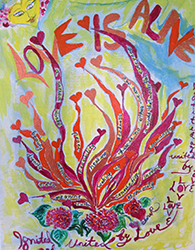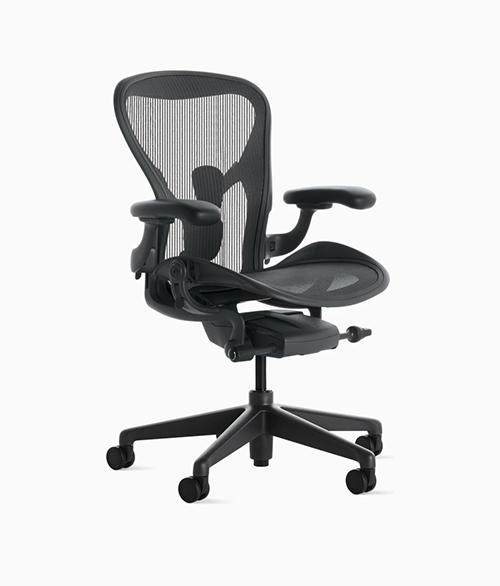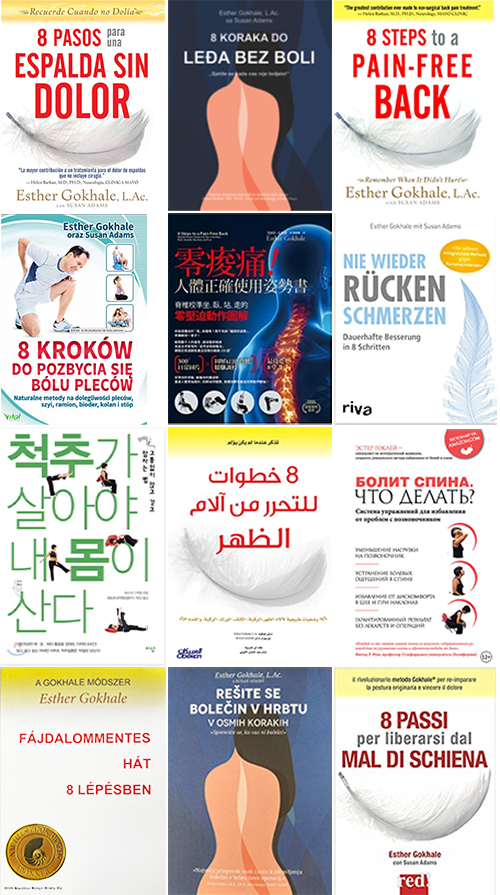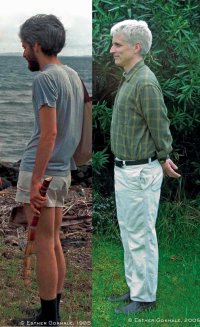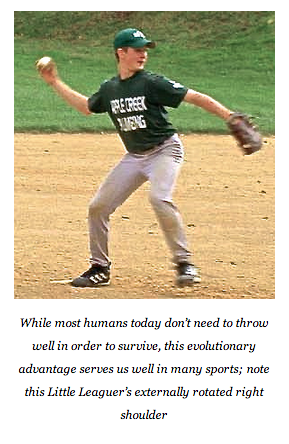In January and February this year I took the Gokhale Method Elements course, which consists of 18 brief (13 minute) but potent lessons. I would like to share my experience of the Gokhale Method with you in this blog post.
My goals were to find out how to sit, stand, and walk well, so that I don’t overstress the scoliotic parts of my back. I was also in search of more comfortable and beneficial sleeping positions. I felt I needed guidance to help me develop a better sense of my body posture and alignment. To be able to do a one-on-one course online made this possible for me.
It was only when I saw the difference between my “Before” and “After” pictures that I realized just how much change it was possible to make to my posture in such a relatively short period.
Comparing and Contrasting the Herman Miller Aeron Chair and the Gokhale Pain-Free™ Chair
I frequently get questions about what makes a good office chair. Of course, some office chairs are primarily fashioned for style and aesthetic appeal. In general, I would say these may be easy on the eye, but over time are hard on the body!
Ergonomic chairs
People frequently ask my opinion on how various ergonomic chairs on the market might help them. This makes sense given the rising prevalence of back pain¹. “Ergonomic” means that something is designed primarily for the health, comfort, and protection of users. Among the specific chairs people ask me about, the Herman Miller Aeron Chair tops the list. To answer efficiently, I like to compare and contrast it with the chair I designed, the Gokhale Method Pain-Free™ chair, as this embodies the posture principles confirmed by my research and experience.
The Virtues of a Hard Copy Book in Digital Times
It has been 14 years since my book 8 Steps to a Pain-Free Back came out in hard copy. For years I had wished I had a book to send to those people who called me from the East Coast or Midwest. These were often relatives or friends of people I had worked with in California, who were suffering terrible back pain and needed help. And so I got writing.
A book to solve back pain
Although there was clearly a huge need for a book to solve back pain, I was still surprised to find I had written a bestseller. It reached number two on Amazon.com following our American Public Television program in 2011, and number three following the New York Times article (paywall) naming me “The Posture Guru of Silicon Valley” in 2013. It has now been published in 12 languages (Croatian later this year), and sold over 250,000 copies.
My Favorite Exercises for When You Can't Visit the Gym, Part 1: Chair Pose
Whether you are on the road, in a campground, or just stuck at home during quarantine, you can always exercise. I’ve been dancing since I was a young child, so I have a very strong bias for dance as a way of exercising, but I also like to change it up with other types of exercise. It turns out that we have a lot of options, even when we can’t access the gym. Chair Pose (Utkatasana in Sanskrit) is a great example of an at-home, equipment-free exercise which can strengthen a variety of muscles in very little time. You don’t have to spend forever and a day in Chair Pose to reap its benefits. This makes it a perfect fit for our busy lives.
Get Winter-Ready with Improved Circulation
As winter approaches and the weather cools, we all have one thing on our minds: staying warm! One major benefit of learning the Gokhale Method (and good posture in general) is improved circulation. We’ve often heard from students about their warmer hands and feet, and we’ve even heard from people who have significantly reduced their heating bill now that their extremities aren’t always freezing! When you align your body well, your blood flows unimpeded throughout the body, passing nutrients to cells and maintaining homeostatic processes, like regulating temperature, glucose, and sodium levels. Imbalances in this process can lead to illness and prevent healing.
Here are three simple ways to
Posture Tips to "Stand" a Holiday Party
The holiday season has arrived, and with it, the formidable holiday party. If, like most people, your back starts aching after an hour (or less!) at the hors d'ouevres table, consider this advice for your next yuletide function:
1. Put your weight over your heels. When we balance the weight of our bodies towards our toes, it can disturb the alignment of our weight-bearing joints. The dense and sturdy heel bone is much better equipped to bear weight than the delicate bones of the forefoot.
Holiday Health (Posture Tips)
The holidays are upon us and ‘tis the season for cooking, cleaning and entertaining. You may find yourself especially reliant upon your body as you enjoy the added festivities. We want to help keep you safe and healthy with some seasonal posture tips!
Shoulder positioning
Whether you are baking dozens of cookies or wrapping bundles of presents, your shoulders may feel uncomfortable if neglected. Firstly, assess your surroundings. Whatever your task, ensure that it is within comfortable reach.
Settle Into Fall
As the season turns and the colors around us are changing, leaves begin to float off their branches. Just as our environment is settling in, we too can ground our bodies, using gravity as our guide. The ability to relax downwards is an essential part of feeling comfortable within your body. Here are some ways you can fall into your natural posture:
Nesting the Pelvis
Help your pelvis navigate its way home. While standing, take a little zigzag squat. Imagine you are about to sit down on a chair located behind you (not just directly under you) and let the pelvis fall forward. Feel your pelvis dropping between the legs, as though it is “nesting.
Pitching Posture and Evolution
Baseball season is well underway and the 2014 All Star Game will soon be upon us. As always, power and precision pitching will be key, which is one reason why not a single chimpanzee will find himself in either of the All Star Team rotations. Given that adult chimps are overall stronger than even the most powerful baseball players, how can it be that a chimp’s “fast” ball clocks in at only about 20 miles per hour, whereas today’s Major League pitchers routinely throw balls at 90-100 mph.
Why chimp strength doesn’t translate into throwing a fastball–and why relatively weak human beings are so much better at powerfully and accurately throwing–is a line of questioning anthropologist Neil T. Roach and a team of researchers set out to explore. Their findings–reported in “Elastic energy storage in the shoulder and the evolution of high-speed throwing in Homo,” a study published last year in Nature, is what inspires this post.

